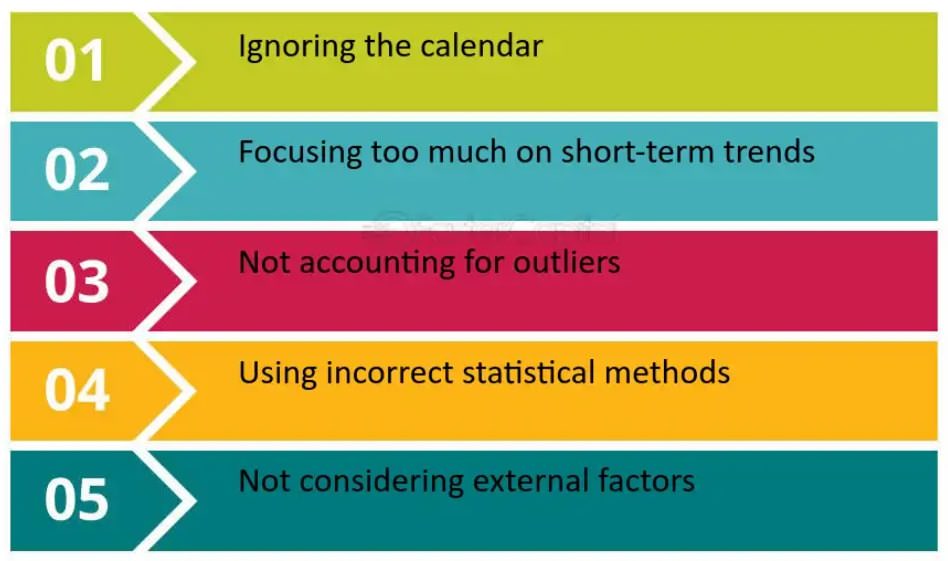- Blog
- Analytics and Predictive Analysis for Car Dealers
Analytics and Predictive Analysis for Car Dealers
Boost car sales strategies with data! Discover how dealerships can utilize automotive marketing analytics to optimize sales and enhance customer satisfaction.

In today’s competitive automotive market, car dealerships must go beyond traditional sales tactics. Leveraging automotive sales analytics and predictive analysis allows dealers to turn raw data into actionable insights.
This helps optimize marketing strategies, personalize customer interactions, and anticipate vehicle demand.
By adopting these automotive predictive analytics tools, dealerships can make data-driven decisions, which provides a distinct advantage in an evolving industry.
Why is data analysis crucial in modern dealerships
Data analysis is vital for dealerships because it enables informed decision-making, meaning increased efficiency and profitability. By analyzing customer data, dealerships can forecast market trends, tailor sales strategies, and enhance customer engagement.
Analysis also helps with optimizing inventory management for car dealers by predicting demand for specific vehicle models and features. This reduces overstock and shortages.
Overall, analyses allow dealerships to monitor performance metrics like sales, profit margins, and operating costs.
Vital data points every dealer should analyze
There are several important details you can use for data-driven decisions for your dealership. By tracking data from previous sales, service history, online inquiries, and more, it’s easy to tailor the sales approach and predict the market trends.
Sales data
By examining key metrics such as total revenue, sales volume, customer demographics, and product preferences, you can gain insights into what drives sales and where improvements are needed.
Sales data analysis helps in pinpointing high-performing vehicles, understanding seasonal fluctuations, and recognizing patterns in customer behavior.
Sales growth tracks how much revenue has increased over time with this basic formula:
1. Subtract the previous month's total sales from the current month's total sales.
2. Divide that difference by the previous month's total sales.
3. Multiply the result by 100 to get a percentage.
It also allows dealerships to adjust pricing strategies, optimize inventory, and refine marketing efforts to target the right audiences.
Customer preferences
By examining data on past purchases, customer feedback, and market trends, dealerships can identify which makes, models, features, and price ranges are most appealing to their clients.
This analysis can reveal insights into buyer demographics, such as age, income levels, and lifestyle preferences, allowing you to curate a selection that aligns with the needs and desires of the target market.
By using this data, dealerships can create a more personalized shopping experience, fostering loyalty and encouraging repeat business.
Market trends and local seasonalities
Market trends, such as shifts in consumer preferences towards electric and hybrid vehicles, influence dealership inventory and marketing approaches.
Meanwhile, local seasonalities, such as increased demand for SUVs in winter months or convertible models in summer, can significantly impact sales patterns.

Mistakes to avoid when analyzing seasonalities in sales
With analytics and predictive analysis, dealers can identify these trends and seasonal fluctuations. This enables them to tailor the data-driven approach, meeting specific customer needs, but also maximizing profitability by aligning stock with market demand.
Website traffic and user behavior
By using analytics tools, dealerships can gather valuable insights into how customers interact with their websites, including the pages they visit, the duration of their visits, and their navigation paths.
This data allows dealers to identify popular models, features that attract user interest, and common barriers to conversion, such as complicated forms or slow-loading pages.
Additionally, understanding user demographics and geographic locations can inform targeted marketing strategies, helping dealerships tailor content for specific audiences.
An example KPI list for a used car dealer
Here's a list of the most important metrics that a used car dealer can track to measure performance and improve dealership operations:
- Sales conversion rate: The percentage of leads or inquiries that result in a sale.
- Website traffic: The number of visitors to the website.
- Cost per lead (CPL): The total marketing spend divided by the number of leads generated.
- Net profit margin: The percentage of revenue that remains after all expenses are deducted.
- Return on investment (ROI): A measure of the profitability of investments made in marketing, training, and inventory.
- Customer retention rate: The percentage of customers who return for future purchases or services.
Tracking these KPIs will provide a comprehensive view of the dealership's performance, helping to identify strengths and areas for improvement while aligning strategies with business goals.
Evaluate your dealership to see which KPIs you’re currently tracking. Then consider tracking a few of the metrics mentioned above.
Data analysis tools and software
The right data analysis tools can transform raw data into actionable strategies, ultimately leading to improved customer satisfaction and increased profitability. Here are three tools you can use to make more informed sales decisions.
Tableau
Tableau is a powerful data visualization tool that helps analyze data and create interactive dashboards. A dealership can use Tableau to visualize sales trends, monitor inventory levels, and analyze customer demographics.
For example, by visualizing sales data over the past few years, the dealership can identify which car models sell best during different seasons, enabling them to stock more of those models in advance.
Microsoft Power BI
This tool provides interactive visualizations and business intelligence capabilities. You can use it to analyze customer inquiries and leads.
By tracking the response times and conversion rates for different sales teams, your dealership can identify which sales strategies are most effective, leading to improved customer engagement and higher sales
Looker Studio
Looker Studio is a free data visualization tool that allows you to create custom reports and dashboards that showcase business data in real-time. You can use it to track online marketing performance and combine data from multiple sources.
By integrating data from Google ads and social media campaigns, your dealership can assess which marketing channels generate the most leads and conversions, allowing you to allocate the marketing budget more effectively.
How does predictive analysis work in the automotive sector?
Predictive analysis in the automotive sector involves using data analysis techniques to forecast future events, trends, and behaviors related to vehicles, customers, and market dynamics.
This approach makes use of historical data, machine learning, and statistical algorithms to help dealerships make future business and stock decisions. The predictive models are continually refined and improved as new data becomes available.
Different scenarios are simulated to predict potential future events, such as sales forecasts based on changing market conditions or customer trends.
Types of predictions you can make after an analysis
Now that we’ve covered the theoretical part, how can you actually use the results of the analysis and implement the predictions in your dealership business? By leveraging data, you can better understand your customers and optimize your processes.
Vehicle demand forecast
To create an effective vehicle demand forecast using predictive analysis, the dealership should leverage sales data, market trends, and customer insights.
By employing statistical methods and machine learning algorithms, you can analyze factors such as seasonal buying patterns, economic indicators, and regional preferences to identify trends that influence demand.
Additionally, incorporating external data sources, such as competitor pricing and inventory levels, can provide a comprehensive view of the market landscape. By using all of these, you can accurately forecast future demand.
Seasonality in local area
It's essential to analyze seasonality within the local market. By examining historical sales data, the dealership can identify specific seasonal trends and patterns that influence buying behavior in their area.
For example, certain times of the year may see increased demand for specific vehicle types, such as trucks in the fall for work-related tasks or family vehicles during spring for road trips.
Also, local events, weather conditions, and economic cycles can further impact consumer preferences and purchasing decisions. By leveraging this seasonal data, you can ensure optimal stock levels and maximize sales opportunities throughout the year.
Anticipating customer preference trends
To successfully anticipate customer preference trends, it’s important to examine changing consumer behaviors and market dynamics.
By analyzing historical sales data, customer feedback, and market research, the dealership can identify emerging trends in vehicle preferences, such as shifts towards electric vehicles, specific makes and models, or features that are increasingly in demand.
Monitoring external factors like economic conditions, fuel prices, and technological advancements can provide valuable insights into what customers are likely to prioritize in their purchasing decisions.
Market price trends
A fourth type of prediction you can make after an analysis is market price trends. This involves forecasting fluctuations in used vehicle prices based on factors such as economic conditions, supply chain dynamics, and changes in consumer demand.
By analyzing historical price data and current market conditions, dealerships can gain insights into when to buy or sell vehicles to maximize profitability.
Understanding these price trends allows B2B dealerships to optimize their pricing strategies, ensuring they remain competitive while also aligning their offerings with market expectations.
Best practices for small and medium dealerships
Now that we’ve covered the basics, what are some key points you can include in your day to day business? Adopting best practices for data analysis and predictive analysis can greatly enhance your operations, and increase sales.
- Make sure that your data, such as customer information, vehicle details, and sales records, is up to date and accurate. Regularly audit and clean your data to remove duplicates or outdated entries.
- Use a centralized system like a CRM or Dealer Management System (DMS) to manage all relevant data. Segment customers based on their preferences, behavior, and demographics. This helps with personalized marketing and targeted promotions.
- Work with data from social media, search engines, and your website to target potential buyers with personalized offers. Use analytics to measure the effectiveness of online advertising campaigns.
Conclusion
Analytics and predictive analysis are transformative tools for car dealerships, enabling them to turn data into actionable insights.
The right data analysis tools can transform raw data into effective strategies and maximize data’s potential.
All this will improve both operational efficiency and customer satisfaction, leading to long-term growth of your dealership business.
eCarsTrade isn't just an online auction platform - we're also a valuable resource for car dealers and traders. Our blog offers expert advice on various topics, including:

